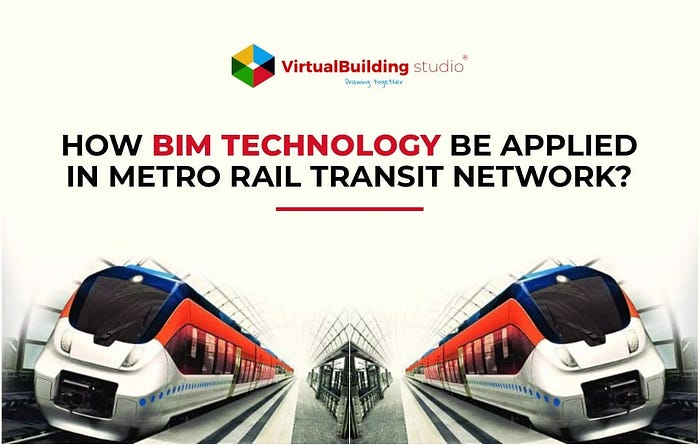How BIM Technology be applied in Metro Rail Transit Network?
With the fast advancement of metropolitan areas, particularly the development of metro rail travel, BIM is a powerful method to mitigate metropolitan gridlock. There is restricted site space, complex asset designation, tight timetable, underground pipeline complex designing issues, and so much more.

BIM innovation in terms of multi-dimensional representation, definition, virtual reproduction, and numerous different benefits can viably take care of these specialized issues. BIM innovation creatively investigates all through the lifecycle of BIM innovation with regards to the metro rail travel project.
The model data documents can be drawn via using tools such as Navisworks for multi-dimension movement creation to decide the ideal development plan of how the project would possibly take shape.
The development in BIM takes place through the utilization of cameras and sensors to accomplish electronic reconciliation, dynamic checking of the activity, and support of underground resources.
Utilizing numerous benefits of BIM innovation, one cant just improve the designing efficiency and development effectiveness of the metro rail travel project, but even finish the activities and tasks with minimal upkeep.
Why implement BIM in a Metro Rail Project?
With the consistent improvement of social design, metropolitan gridlock is deteriorating. To take care of this issue, all territories and regions the nation over have ceaselessly expanded their interest in metropolitan rail development to additionally upgrade metropolitan vehicle limit.
As of now, underground or overground transportation development, has basic designing specialized troubles like restricted underground space, a huge measure of development, tight development period, crowded areas, and complex asset designation.
Planning and development frequently taking place lead to foundational layout changes, engineering changes, unclear development methodology, development delays, cost control, and numerous different issues all through the whole life pattern of the structure.
This genuinely hampers the project due to not keeping up with the trend-setting innovations to organize and tackle issues confronting the whole life pattern of a structure. Building Information Modeling (BIM) is a model dependent on an assortment of data identified with building designing, which in this case is metro rail and subway structure.
In light of a multi-dimensional model, the activity is set up during the development of the entire life cycle to understand the impact of practice before development to manage the plan, design the structure, check for the issues, and then finally move on to development.
What challenges Metro Rail Project can face in absence of BIM?
A metro rail development project is generally separated into two sections — principal design of the station and inter-route between stations. The specialized challenges of the task are:
- Construction site of the metro station and distance between stations in an over-crowded region with thickly populated zones.
- Time is tight with so much development to take place.
- Underground pipeline format including water supply and waste, gas, fiber optics, power, water supply, and pipelines, all weaved in a confusing design.
This is where the old-fashioned traditional planning and development find it really hard to tackle such issues. Hence, considering multi-dimension perceivability, reproduction, coordination, and integrity of information with BIM innovation can prove helpful during the life span of metro rail construction phases.
Read More : Green Metro: An Effective solution for the New-Age
How BIM Implementation gives a boost to a Metro Rail Structure?
BIM drawings are analyzed.
To begin with, in view of starter plan drawings, the BIM group makes multi-dimensional models dependent on various expert drawings. At that point, the model built by every expert is gathered to produce a well-made multi-dimension model containing all the aspects of metro rail construction.
Herein, clash detection happens, and then modifications are brought about within BIM until the conflict issues are sorted.
Sketch cooperative energies to improve plan proficiency.
For development endeavors and configuration foundations, the use of teams to work in a cooperative manner is vital. At any point, when one or more of the associations is altered, the entire model will be naturally changed improving the process of role allocation and amendments.
Determine the pipeline coordination.
Through the impact recognition of the model, BIM adjusts the crash issue in the beginning phase of configuration so that the architects can naturally identify the fitting level of pipeline format and forestall each pipeline impact.
As an example, let say prior to the clash detection, the drainage pipe and ventilation pipe impacted, the utilization of BIM innovation can be made to sidestep the ventilation line, not to collide with the drainage line, making it more sensible to decide the coordination between pipes involved.
Read More : BIM Technology be applied in Metro Rail Transit



Comments
Post a Comment